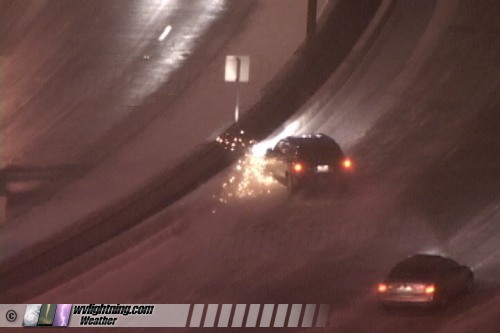
Icy bridges cause numerous crashes: Winter's comeback creates the usual highway dangers
March 17, 2007
ABOVE: An SUV crashes into the barrier on I-64 after skidding on ice Saturday morning. (More photos below)
EXPEDITION VIDEO: Numerous accidents caught on tape in Charleston on Saturday morning: Watch Video
DRIVING TIPS: Icy Bridge Safety
CHARLESTON, WV - Winter made a comeback in West Virginia on Saturday - but not without its usual dangers. More than twelve accidents occured on the I-64 bridge at the Oakwood interchange due to the iced-over bridge - the worst I have seen in four years of shooting at this location. Thankfully no one was hurt in any of the crashes.
As a result of these accidents, this video and the bridge have gained national media coverage this week. The main problem with this location (I-64 eastbound at the Oakwood Road interchange) is that the bridge deck begins about one-sixth of the way into the tight 90-degree turn, and is not visible to oncoming traffic. In situations where the bridge ices over before the rest of the roadway (which happens at the onset of nearly every snow event), drivers coming around the curve cannot see the ice/snow cover until they are already on it. At that point there is nothing they can do if they are traveling too fast. Most of the accidents/spinouts are with vehicles traveling too fast. While this location has an element of surprise in the bridge-ice factor being 'hidden' in the curve, driver behavior is probably the bigger factor in these accidents. Drivers approaching this location cross many smaller bridges prior to reaching the danger zone, all of which will be just as iced over as the big bridge is. Therefore there are plenty of warning signs that the big bridge will be icy just by observing the ice and snow on other bridges. Most drivers crossing the bridge are apparently aware of the conditions and therefore driving slowly, and have little problems as a result. It is the cars traveling 60-70mph that will not make it across.
The bridges ice over quickly during snowfall once temperatures fall below 31F, and the plows are usually quick to spread salt. The Department of Highways watches the weather to determine when to send the plows out. The salt trucks were a little slow to respond during this incident, but I believe this is due to the snow being an upslope event. With a typical approaching snow band, the DOH can see the precip approaching and get the trucks ready. When upslope snow begins, there is no band moving in from Ohio. The radar just suddenly lights up with the snow literally developing overhead. In fact, I almost missed the event after checking the radar at 5:30AM - it was nearly clear with nothing coming from upstream. At 6:00, the radar suddenly lit up with moderate snow shower in classic upslope fashion. Even I was caught off-guard and got to the bridge too late to catch the first 5-6 crashes. My guess is that the DOH was also caught off-guard by this, hence the slower response time.
In the late 1980s, an ice warning system was installed on this bridge and a second bridge about 10 miles west of Charleston, but it was removed after being unreliable. Currently there are other automatic de-icing systems that are more reliable. While the accident rate during icy conditions is high, the bridge only sees five or six events like this per year. A lot different from say, Minnesota or Wisconsin where you'd see far more icing events per season. Whether or not a de-icer would be an economical investment for this location would be something up for review. Judging from their previous attempts to deal with the problem, it appears that the Department of Highways is aware of it and up to this point have decided it is not economical to install any de-icing systems. Furthermore, icy bridge wrecks are common in WV, as many of our bridges are curved. While this bridge has an above average crash risk level, there are many other locations that present the same problem and would need to be equally addressed. For the record, this bridge ranks #5 in the top ten dangerous road locations in Charleston due to accident frequency.
One observation about yesterday's incidents is that many of the vehicles were SUVs with four-wheel drive capability. The silver Forester that spun out and hit the left barrier has full-time all-wheel drive. It all serves as a reminder that AWD and 4WD are ineffective on ice and at high speeds.
BELOW: Cars spin out and crash on I-64 on Saturday morning (click images to enlarge).
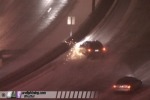  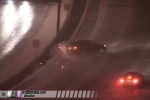  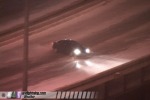  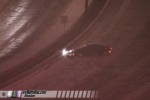

 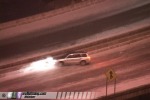  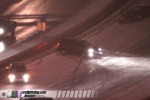  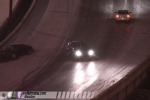  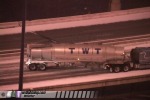
|